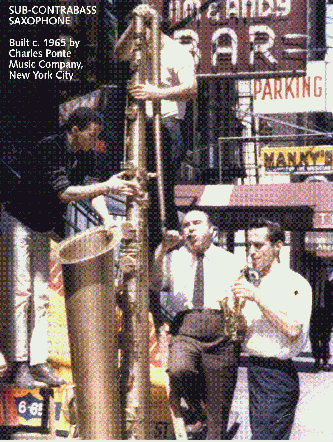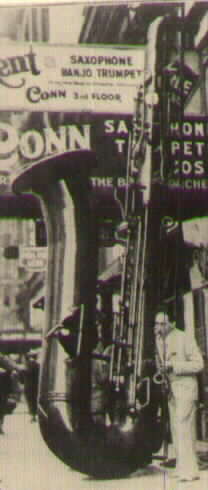| Whether they're real, or the product
of lots of wishful thinking, there are reports from time to time of saxophones
larger than the contrabass.
One of A. Sax's first patents describes a family of instruments that ends
one size larger than today's contrabass, but I have been unable to find
any evidence that the behemoth was ever built.
The instrument pictured at right was actually built - the question is whether or not we can really call it a saxophone. This horn was really intended to be more a stage prop than anything else: note that the "keywork" doesn't actually work - this is why two people are closing pads by hand. Although the horn was capable of generating sound, I have been told by witnesses that it was not tuned to any particular pitch, and was incapable of playing a simple scale in tune. |

|

|
The monster pictured at left was actually built,
but was not built to be played. A close examination of the horn shows
that it is essentially an alto sax enlarged many times. Note that
the keywork is made for "giant" hands - nothing that a single musician could
play with only two hands. C.G. Conn shipped this one around the country
to be used for advertising in the 1920's. There is a new instrument: the tubax, made by Eppelsheim /Konus of Munich, Germany. It is made to have the same range (and fingering) as an Eb contrabass saxophone (much like an Eb contrabass sarrusophone). It has a much narrower bore (also like a sarrusophone), and is made to take a bari sax mouthpiece. Not quite a contrabass saxophone, but an excellent substitute. Even newer is the tubax in CC and BBb, pitched below the Eb contrabass. |